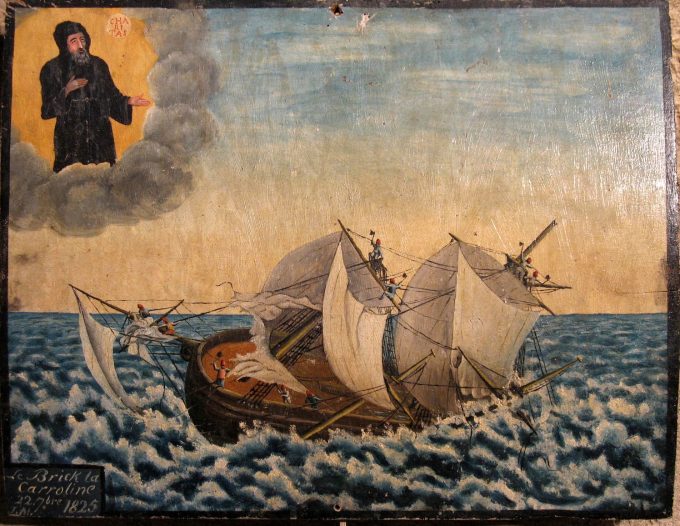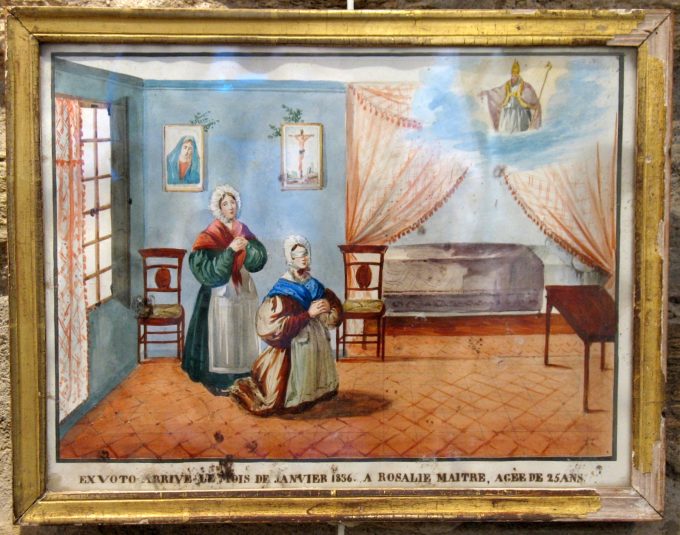The ex-voto is a religious object offered to a deity. They appeared in ancient times and were addressed to a deity as a way of thanks. From the end of the Middle Ages, a particular form of ex-voto developed: the painted ex-voto. It first appeared in Italy, and arrived in its border regions, particularly in Provence from the 17th century (modern period). It is a small painting made by craftsmen, placed in a church or a chapel.
The painted image is schematic, and almost always follows the same model: the painting is made of 3 parts. In the upper part is represented the divine figure thanked, the central part of the painting represents the event or the disaster avoided, finally the insert located at the bottom of the painting dates the event and sometimes names the donor.
14 ex-votos are kept in the museum of Bormes. They are mainly marine ex-votos or representations of accidents of daily life: illness, fall from a horse, or attack of a wild animal.
The saints thanked are Saint François (patron saint of Bormes) or the Holy Virgin.



